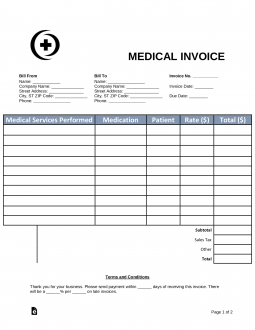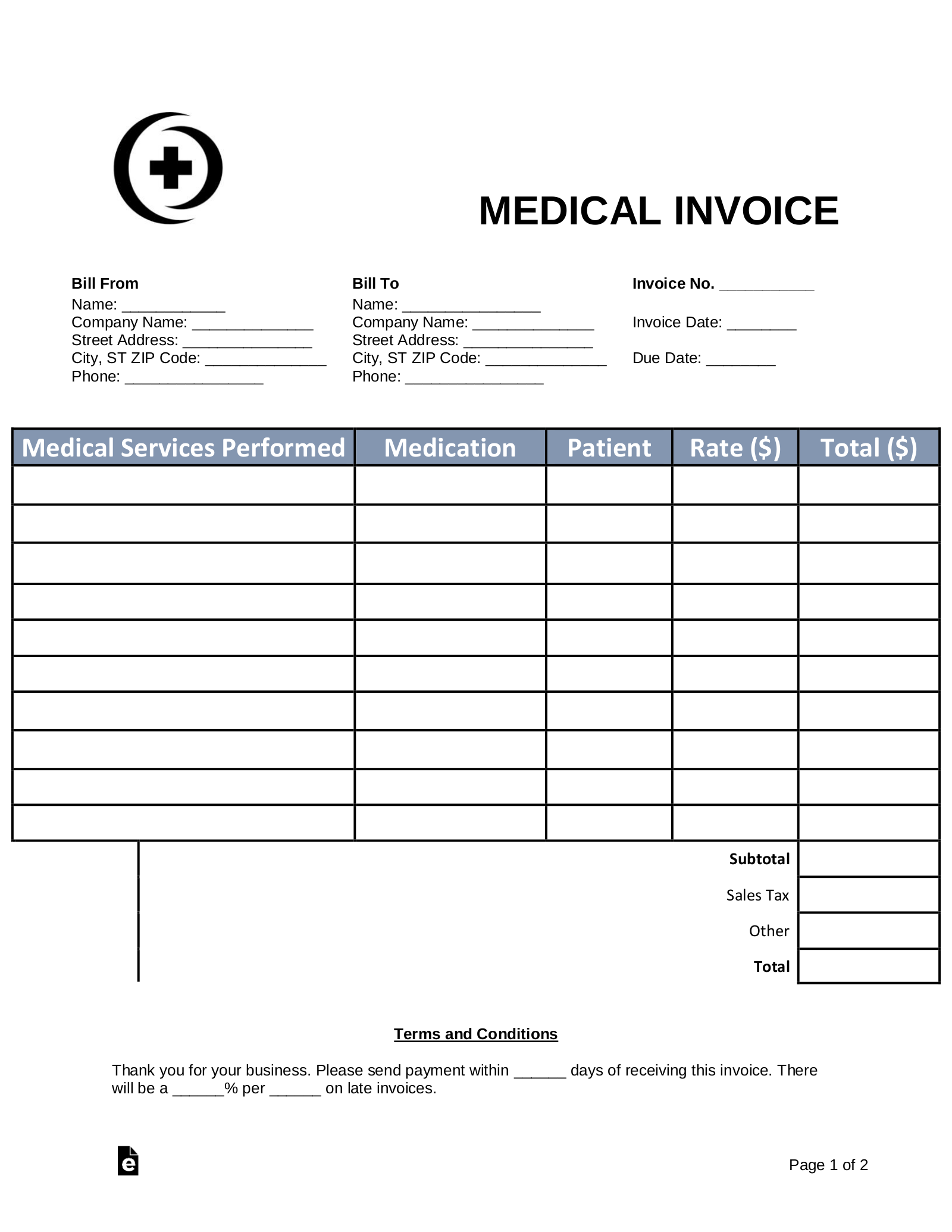Updated March 27, 2023
A medical invoice is both a record of treatment and a bill. It provides an itemized breakdown of all medical services provided and the costs that indicate when payment is due. In accordance with a Medical Debt Relief Act, all medical invoices must give a patient with an outstanding balance a period of one hundred and eighty (180) days before the bill may affect the person’s credit report or charge penalties or interest.
Elements of a Medical Invoice
Like any invoice, this one should also provide identifying information for both the service provider and the client, including names, phone numbers, addresses, and, as relevant, company information.
This invoice should provide a detailed summary of all services rendered, including:
- A description of each visit, procedure, or other intervention, and medications supplied
- The billing rate (by hour, procedure, or other measure) and total for each service
- The subtotal due, taxes due, and total balance due
- The terms for payment, including the due date and penalties for late payments
How to Use a Medical Invoice
1. Collect patient’s payment option
It’s best to sort out payment before initiating treatment. Determine whether the patient has acceptable insurance, whether the insurance will cover the specific procedures at hand, and how any gaps in coverage will be covered. Even patients with insurance should provide some backup means of payment to ensure that all balances are paid.
2. Tally all treatments and charges
Calculate total charges as soon as care has been rendered. Where the patient will be footing all or substantially all of the bill, it is wise to alert them to the coming balance before delivering care.
3. Determine what is owed
Make sure to establish clear procedures for billing. Even if insurance will subsequently be billed, or if the patient will enter into a payment plan to satisfy a balance over time, many medical offices still take some payment upfront.
4. Bill insurance/patient for payment
Medical billing can be a taxing process – so setting a standard process and sticking to it is key. Remember that invoicing insurance does not always go as planned, so plan for the worst, and follow-up with insurance provider and patient as necessary.



